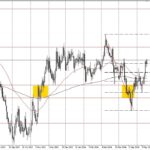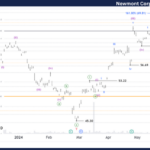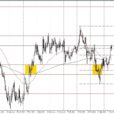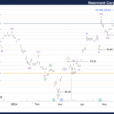
In 2015, the US spent $328 billion on retail drugs, and another $129 billion on “non-retail” drugs, which are the drugs purchased by hospitals, nursing homes, and other health care providers and added to your bill. The operation of the market for prescription drugs is a tangle, in ways that suggest competition is often being hindered–or even throttled.
Matan C. Dabora, Namrata Turaga, and Kevin A. Schulman provide a useful diagram summarizing the US prescription drug market in their article, “Financing and Distribution of Pharmaceuticals in the United States,’ which appears in the May 15, 2017 issue of the Journal of the American Medical Association (pp. E1-E2).
The manufacturers of prescription drugs are at the center top of the figure. The drugs themselves work down the left-hand-side of the figure, through distributors and retailers, before reaching the patients. The various arrows in the center and right of the diagram show flows of payments, including AMP (Average Manufacturer Price), WAC (Wholesale Acquisition Cost), and then a maze of chargebacks, negotiated rebates, and payments from patients and private and public health insurance, often mediated through “pharmacy benefit managers.”

In their short comment, Dabora, Turaga, and Schulman point out that there is a fairly high amount of concentration at a number of places in this market schematic (footnotes omitted):
“The US distributor market is highly consolidated, with 3 companies accounting for more than 85% of market share: AmerisourceBergen, Cardinal Health, and McKesson. The estimated combined revenues from drug distribution for these 3 firms in 2015 was $378 billion. …
“In 2015, an estimated 4.4 billion drug prescriptions were dispensed in the United States … There are approximately 60 000 pharmacies in the United States, of which 38 000 are part of retail chains and 22 000 are independent pharmacies. The retail pharmacy market can be divided into 3 major categories: chain pharmacies and mass merchants with pharmacies, independent pharmacies, and mail-order pharmacies. The 15 largest firms, including CVS, Walgreens, Express Scripts, and Walmart, generated more than $270 billion in revenue in 2015 through retail and mail-order pharmacy, representing approximately 74% of retail prescription revenues.
“PBMs [pharmacy benefit managers] developed in the 1980s as employers added outpatient prescription drug coverage to their health insurance plans. By 2015, industry consolidation had resulted in 3 PBMs—CVS Caremark, Express Scripts, and UnitedHealth’s Optum—controlling a 73% share of the PBM market.
“Health insurance generally includes prescription drug insurance in both public and private health insurance plans. In 2015, 42%of prescription drug spending was from private health insurance, 30% from Medicare, 10% from Medicaid, and 14% from private out-of-pocket payments.
“In addition to the usual product discounts and allowances for product returns, manufacturers provide a series of cash payments to health plans, PBMs, and distributors in the form of rebates and chargebacks as a result of complex pricing arrangements across the industry. The end result of these complex transactions is that in 2015, $115 billion, or 27% of total pharmaceutical sales,was paid by manufacturers to various entities throughout the drug distribution and financing systems.
Aaron S. Kesselheim, Jerry Avorn, and Ameet Sarpatwari provided an overview of the research literature in “The High Cost of Prescription Drugs in the United States Origins and Prospects for Reform.” which appeared in the Journal of the American Medical Association late last summer in the August 23/30, 2016, issue (pp. 859-871). They start with the basic facts that Americans spend more on prescription drugs that people in other countries, and that a number of popular brand-name drugs cost a lot more in the US than in other countries. Here’s a figure on per capita spending on prescription drugs:















